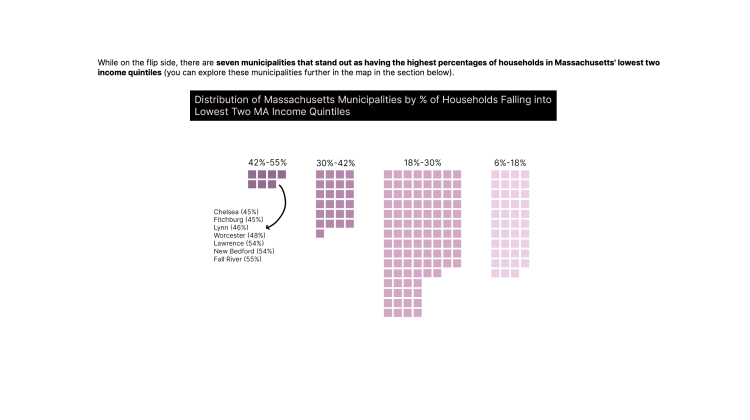For many residents, the ability to afford housing in the Greater Boston region is a struggle and it is getting more difficult. A recent report found that an average household income of $200,000 USD is needed to afford a median-priced home in the region. Renting brings little relief, with 51% of renters spending more than 30% of their household income on housing costs. More than 25% of these households spend over 50% of their income on housing costs. These findings are documented in the 2023 Metropolitan Area Planning Council (MAPC) report, “Homes for Profit.” Painted in this light, it can feel daunting to engage and to imagine pathways towards realizing a more affordable and financially sustainable future. Tackling this challenge through interactive data analysis and visualization is the central theme of Spring 2024’s Interactive Data Visualization & Society, 6.C35/11.C35 and 6.C85/11.C85.
Working with MAPC, the students in the class leveraged over 20 years of housing data to add greater granularity on the processes driving housing costs and designed data visualizations that made sharing of information more accessible to a wider range of community members impacted by rising costs. “This is part of MIT's new Common Ground curriculum, in which we try to explore the intersection of computing with urban planning. In a sense, this is the best of both worlds – students learn advanced data visualization techniques and they also learn how to apply them to a pressing urban policy issue right here in the Boston area,” says Catherine D’Ignazio and Arvind Satyanarayan, who co-designed and led the 6.C35 teaching team.
The thirty interdisciplinary student teams from the course will present their final projects on May 13th in the lobby of the MIT Schwarzman College of Computing. Many of their projects focus on Massachusetts state-level policies, identifying interventions which could enhance efforts to make housing more affordable. "6.C35/11.C35 was a great opportunity to combine my interests in software user interface design and urban planning," says Julia Camacho, an 11-6 undergraduate student at MIT and member of the student team, trainz on the brainz. "Taking this class has helped me gain a better understanding of how to design data visualizations that effectively convey the impacts of public policy and advocate for meaningful change." "Interactive Visualization & Society seamlessly integrated my urban planning background with robust computer science skills such as web development, which at times was challenging but enabled me to tackle housing affordability challenges with both technical proficiency and high-level theoretical thinking," adds Khadija Ghanizada, a current MCP student and member of the student team, Resilient Zoning Initiative. "This interdisciplinary fusion equips me not only with the hard skills of creating interactive data visualizations but also the soft skills of critical analysis, essential for shaping impactful policy narratives."
In addition to D’Ignazio and Satyanarayan the teaching team for the course includes: Lea Verou, Katie Chen, Grace Huang, Enrique Casillas, Jie Fan, Alex Kyaw, and Teodor Nicola.
Learn more about the course






